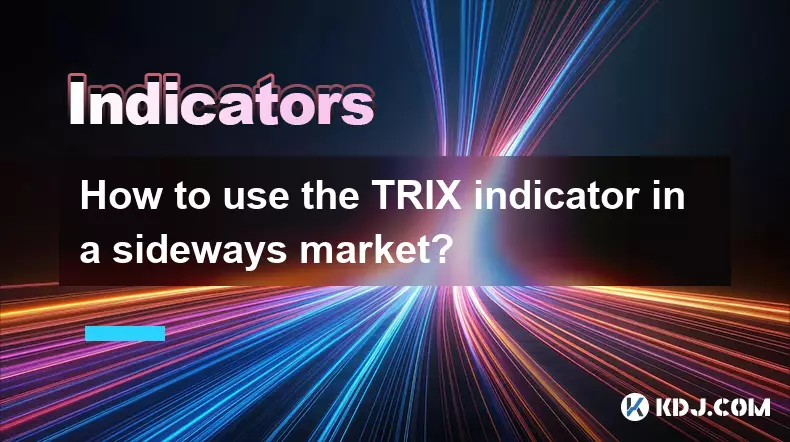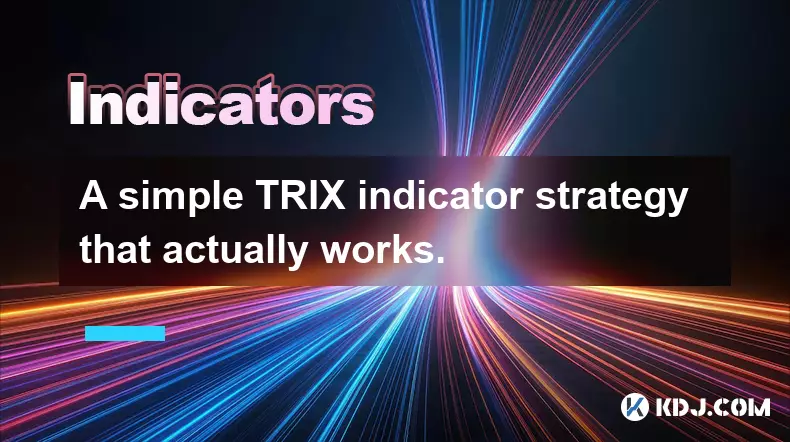-
 bitcoin
bitcoin $103128.103252 USD
-3.33% -
 ethereum
ethereum $3437.127692 USD
-4.86% -
 tether
tether $0.999700 USD
-0.02% -
 xrp
xrp $2.403993 USD
-5.73% -
 bnb
bnb $961.374676 USD
-4.11% -
 solana
solana $154.938665 USD
-8.18% -
 usd-coin
usd-coin $1.000113 USD
0.03% -
 tron
tron $0.298122 USD
0.30% -
 dogecoin
dogecoin $0.172428 USD
-5.76% -
 cardano
cardano $0.557625 USD
-7.13% -
 hyperliquid
hyperliquid $38.740701 USD
-6.51% -
 chainlink
chainlink $15.306051 USD
-7.51% -
 bitcoin-cash
bitcoin-cash $507.558648 USD
-3.26% -
 stellar
stellar $0.281899 USD
-6.74% -
 unus-sed-leo
unus-sed-leo $9.241811 USD
0.57%
What is the difference between KDJ and the Stochastic Oscillator?
The KDJ indicator, an enhanced Stochastic Oscillator with a sensitive J line, helps crypto traders spot early momentum shifts and extreme price levels for timely entries and exits.
Oct 21, 2025 at 12:18 pm

KDJ and Stochastic Oscillator: Core Definitions
1. The Stochastic Oscillator is a momentum indicator that compares a particular closing price of an asset to a range of prices over a specific period, usually 14 days. It consists of two lines: %K, which reflects the current closing level relative to the high-low range, and %D, a moving average of %K. This tool helps traders identify overbought or oversold conditions in the market.
2. KDJ is an enhanced version of the Stochastic Oscillator, originally developed and widely used in Chinese financial markets. It adds a third line called the J line, which measures the divergence between %K and %D. The J line amplifies fluctuations, making it more sensitive to rapid price changes, especially useful in fast-moving environments like cryptocurrency trading.
3. Both indicators operate within a 0 to 100 range, where values above 80 typically indicate overbought zones and below 20 suggest oversold levels. However, KDJ's additional J line introduces a layer of volatility assessment not present in the standard Stochastic setup.
4. The mathematical foundation of both tools relies on similar formulas for %K and %D. The difference lies in how the J line is calculated — as J = 3 × %K - 2 × %D. This magnifies momentum shifts and can signal early trend reversals or accelerations.
5. While the classic Stochastic focuses on price momentum within a set range, KDJ emphasizes the speed and potential extremity of price movements, particularly relevant in highly speculative markets such as Bitcoin or altcoin trading.
Application in Cryptocurrency Markets
1. In volatile crypto markets, KDJ’s sensitivity due to the J line allows traders to detect sharp momentum swings earlier than traditional Stochastic signals. For instance, when the J line spikes above 100 or plunges below 0, it may indicate extreme bullish or bearish sentiment, often preceding pullbacks.
2. Traders using the Stochastic Oscillator might wait for crossovers between %K and %D within the overbought/oversold bands before entering positions. In contrast, KDJ users often monitor the J line’s deviation from %K and %D to anticipate breakouts or exhaustion points.
3. On shorter timeframes like 1-hour or 4-hour charts, KDJ tends to generate more signals due to its amplified response. This can be advantageous for scalpers but increases the risk of false signals during sideways consolidation phases.
4. Many algorithmic trading bots deployed in decentralized exchanges integrate KDJ logic to exploit short-term divergences, especially when combined with volume analysis. The J line’s tendency to overshoot provides quantifiable thresholds for automated entries and exits.
5. During major crypto rallies, such as those seen in Ethereum during network upgrade anticipation, KDJ readings frequently remain in overbought territory for extended periods. Relying solely on threshold-based decisions without considering broader trend context can lead to premature trades.
Signal Interpretation and Practical Use
1. A bullish signal in KDJ occurs when the %K line crosses above the %D line while both are in oversold territory, and the J line begins rising from below 0. This combination suggests momentum is shifting upward despite prior selling pressure.
2. Conversely, a bearish signal forms when %K crosses below %D in overbought conditions, accompanied by the J line rolling over from above 100. Such patterns have been observed before sharp corrections in assets like Solana following FOMO-driven pumps.
3. Divergence strategies are common with both indicators. If price makes a higher high but the KDJ fails to surpass its previous peak, it indicates weakening momentum. This type of hidden divergence has preceded several BTC top formations near key resistance levels.
4. Some traders apply smoothing filters or adjust the lookback period from 14 to 9 or even 5 to adapt KDJ for intraday crypto trading. Shorter periods increase responsiveness but require stricter confirmation rules to avoid noise-induced losses.
5. Integration with other tools like MACD or Bollinger Bands improves reliability. For example, a KDJ buy signal coinciding with a MACD histogram turning positive enhances conviction, particularly after prolonged downtrends in tokens like Chainlink.
Frequently Asked Questions
What does it mean when the J line exceeds 100?When the J line goes above 100, it indicates extreme overbought conditions beyond the normal Stochastic range. This often reflects strong bullish momentum but also raises the likelihood of a corrective pullback, especially if not supported by increasing volume.
Can KDJ be used effectively on daily crypto charts?Yes, on daily charts, KDJ provides fewer but higher-quality signals. Extended stays above 80 or below 20 can indicate sustained trends rather than immediate reversal points, requiring alignment with macro factors like regulatory news or on-chain metrics.
Is the Stochastic Oscillator less effective than KDJ in fast markets?In rapidly moving crypto environments, the standard Stochastic may lag due to its smoother calculation. KDJ’s inclusion of the J line captures abrupt shifts more quickly, giving it an edge in detecting early momentum changes during flash rallies or capitulation events.
How do traders confirm KDJ signals to reduce false positives?Confirmation methods include waiting for candlestick reversal patterns, checking alignment with moving averages, or requiring volume expansion at the time of signal generation. Combining with support/resistance levels further strengthens validity, particularly around psychological price points like $60,000 for Bitcoin.
Disclaimer:info@kdj.com
The information provided is not trading advice. kdj.com does not assume any responsibility for any investments made based on the information provided in this article. Cryptocurrencies are highly volatile and it is highly recommended that you invest with caution after thorough research!
If you believe that the content used on this website infringes your copyright, please contact us immediately (info@kdj.com) and we will delete it promptly.
- Dogecoin, Investor, Knowledge: Navigating the Meme Coin Mania in 2025
- 2025-11-13 00:40:00
- Mississippi Retailers and the Penny Predicament: What's a Cash Customer to Do?
- 2025-11-13 01:00:02
- Hyperliquid, Aster Whales, and Zero Knowledge Proof: A New Era of Crypto?
- 2025-11-13 01:20:01
- XRP vs. Crypto Presales: Can Digitap or LivLive Deliver a 100x Return?
- 2025-11-13 01:15:01
- Hedera, Regulated Assets, and Dual Token Flexibility: A New Era for Tokenization
- 2025-11-13 01:45:01
- XRP, Cardano, and the Altcoin Arena: What's Hot Now?
- 2025-11-13 01:25:03
Related knowledge

What's the best way to learn the TRIX indicator?
Nov 10,2025 at 12:39pm
Understanding the Basics of the TRIX Indicator1. The TRIX (Triple Exponential Average) indicator is a momentum oscillator designed to filter out short...

How do professional traders use the TRIX indicator?
Nov 06,2025 at 04:40pm
Understanding the TRIX Indicator in Crypto TradingThe TRIX (Triple Exponential Average) indicator is a momentum oscillator used by professional trader...

Can I use the TRIX indicator on my mobile trading app?
Nov 07,2025 at 07:40pm
The TRIX indicator, a momentum oscillator designed to filter out short-term fluctuations and highlight long-term trends, has become increasingly popul...

How to use the TRIX indicator in a sideways market?
Nov 10,2025 at 03:00pm
Bitcoin’s Role in Decentralized Finance Evolution1. Bitcoin remains the cornerstone of decentralized finance, serving as both a store of value and a b...

How to code a simple TRIX indicator script in Pine Script?
Nov 07,2025 at 06:20am
How to Code a Simple TRIX Indicator in Pine Script The TRIX (Triple Exponential Moving Average) indicator is widely used in cryptocurrency trading to ...

A simple TRIX indicator strategy that actually works.
Nov 08,2025 at 05:39pm
Understanding the TRIX Indicator in Crypto Trading1. The TRIX (Triple Exponential Average) indicator is a momentum oscillator designed to filter out s...

What's the best way to learn the TRIX indicator?
Nov 10,2025 at 12:39pm
Understanding the Basics of the TRIX Indicator1. The TRIX (Triple Exponential Average) indicator is a momentum oscillator designed to filter out short...

How do professional traders use the TRIX indicator?
Nov 06,2025 at 04:40pm
Understanding the TRIX Indicator in Crypto TradingThe TRIX (Triple Exponential Average) indicator is a momentum oscillator used by professional trader...

Can I use the TRIX indicator on my mobile trading app?
Nov 07,2025 at 07:40pm
The TRIX indicator, a momentum oscillator designed to filter out short-term fluctuations and highlight long-term trends, has become increasingly popul...

How to use the TRIX indicator in a sideways market?
Nov 10,2025 at 03:00pm
Bitcoin’s Role in Decentralized Finance Evolution1. Bitcoin remains the cornerstone of decentralized finance, serving as both a store of value and a b...

How to code a simple TRIX indicator script in Pine Script?
Nov 07,2025 at 06:20am
How to Code a Simple TRIX Indicator in Pine Script The TRIX (Triple Exponential Moving Average) indicator is widely used in cryptocurrency trading to ...

A simple TRIX indicator strategy that actually works.
Nov 08,2025 at 05:39pm
Understanding the TRIX Indicator in Crypto Trading1. The TRIX (Triple Exponential Average) indicator is a momentum oscillator designed to filter out s...
See all articles










































































